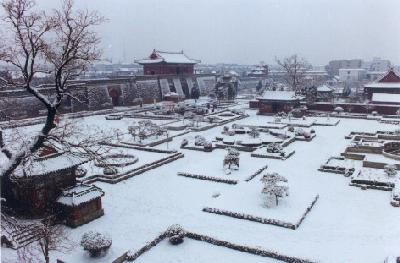| Art Q&A > Architecture |
|
|
Altar & Temple
As early as the prehistoric age, there had been worship of natural gods and ancestors, which thus developed into a primitive religion. China is an early-maturing society but this primitive worship was retained when it entered into a civilized society, and was carefully transformed by the Confucian school and thereby intensified. The imperial authority was set off by religious authority and clan power, which thus became an important spiritual pillar safeguarding the feudal hierarchy.
Tai Miao, or the Imperial Ancestral Temple, is the highest class of Temple, with existing representative Beijing Tai Miao Palace of the Ming and Qing dynasties (1368-1911).
Wise Men's Ancestral Hall is the place to worship some famous people in history. The most famous of this kind is Confucius temple, the largest of which is in Qufu, Confucius' (ancient Chinese philosopher and educator) hometown. Guandi Temple, also called Wu Miao in Xiezhou, Shanxi Province, worships the famous general Guan Yu in the Three Kingdoms Period (220-280).
Ancestor's Hall, or ancestral hall, is the place to worship clan ancestors, for instance, Zu Miao in Foshan, Guangdong Province. The construction and decoration styles similar to that of Zu Miao are very common in areas south of the Five Ridges, Guangdong, Fujian and Taiwan.
|
||||||||
All rights reserved. Reproduction of text for non-commercial purposes is permitted provided that both the source and author are acknowledged and a notifying email is sent to us. |
||||||||
 |
 Altar
Altar



